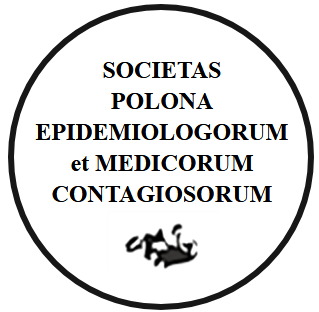PRACA ORYGINALNA
Lyme disease in Ukraine in 2000–2023
1
Department of Microbiology, Danylo Halytsky Lviv National Medical University, Ukraine
Data nadesłania: 26-08-2024
Data ostatniej rewizji: 20-11-2024
Data akceptacji: 06-12-2024
Data publikacji online: 13-12-2024
Data publikacji: 31-12-2024
Autor do korespondencji
Yulian Konechnyi
Department of Microbiology, Danylo Halytsky Lviv National Medical University, Zelena, 12, 79014, Lviv, Ukraine
Department of Microbiology, Danylo Halytsky Lviv National Medical University, Zelena, 12, 79014, Lviv, Ukraine
Przegl Epidemiol 2024;78(4):375-380
SŁOWA KLUCZOWE
DZIEDZINY
STRESZCZENIE
Background: Lyme disease (LD) is the most common tick-borne zoonotic infection in Europe and North America, caused by Borrelia spp., primarily transmitted through the bite of infected Ixodes ticks. The disease has become a significant public health concern in Ukraine, with the number of reported cases steadily increasing since the initiation of official registration in 2000. Despite this trend, the epidemiological characteristics of LD in Ukraine, particularly its geographic distribution and the influence of socio-political events on its prevalence, remain underexplored. Objective: This study aimed to investigate the incidence of LD in Ukraine from 2000 to 2023. Material and methods: The study utilized official statistical data of registered LM cases in Ukraine from the Ministry of Health of Ukraine and relevant literature sources. Results: Over the 23-year period (2000–2023), a total of 45,371 cases of Lyme disease (LD) were recorded in Ukraine, with an annual average of 1,890 ± 1,662 cases. A significant increase was observed in 2015, with an additional rise in 2022, both likely linked to socio-political events such as the reorganization of health services and the war-related population displacement. The highest incidence was recorded in 2023, at 14.08 cases per 100,000 population. Geographic analysis revealed that Kyiv and the Kyiv region had the highest incidence rates, with urban areas being disproportionately affected. Notably, 83.2% of the cases were recorded among urban residents, reflecting a clear urban-rural disparity. Conclusions: The incidence of Lyme disease in Ukraine has significantly increased over the past 23 years, particularly in urban areas. The peaks in 2015 and 2022 suggest potential links to socio-political disruptions, such as changes in health services and population displacement due to the war. These findings underscore the need for improved public health strategies, with a particular focus on managing LD in urban settings, and addressing the urban-rural disparity in case distribution.
Udostępnij
ARTYKUŁ POWIĄZANY
Przetwarzamy dane osobowe zbierane podczas odwiedzania serwisu. Realizacja funkcji pozyskiwania informacji o użytkownikach i ich zachowaniu odbywa się poprzez dobrowolnie wprowadzone w formularzach informacje oraz zapisywanie w urządzeniach końcowych plików cookies (tzw. ciasteczka). Dane, w tym pliki cookies, wykorzystywane są w celu realizacji usług, zapewnienia wygodnego korzystania ze strony oraz w celu monitorowania ruchu zgodnie z Polityką prywatności. Dane są także zbierane i przetwarzane przez narzędzie Google Analytics (więcej).
Możesz zmienić ustawienia cookies w swojej przeglądarce. Ograniczenie stosowania plików cookies w konfiguracji przeglądarki może wpłynąć na niektóre funkcjonalności dostępne na stronie.
Możesz zmienić ustawienia cookies w swojej przeglądarce. Ograniczenie stosowania plików cookies w konfiguracji przeglądarki może wpłynąć na niektóre funkcjonalności dostępne na stronie.




